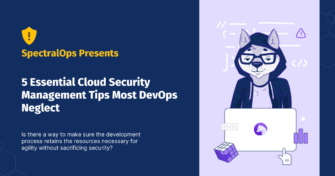Netz: Scan the internet while drinking coffee
Netz lets you run internet-wide misconfigurations research easily and continuously. It supports infrastructure-as-code so you can put your plan in a config file, run the CLI,
Your team is racing against the clock to meet an important deadline. Cybercriminals, however, wait behind the scenes for the right opportunity to attack. It takes a single, well-timed attack to completely disrupt your operations, exposing important data and ruining your brand.
With global cybercrime damages projected to hit $10.5 trillion annually by 2025, you must prepare for the worst-case scenario. It’s not enough to just put up walls anymore. Traditional security techniques are no longer effective. It’s time to change your focus from protection to strong cyber resilience.
A robust cyber resilience strategy enables your company to endure, adapt, and recover from threats. By anticipating the inevitable, you can reduce disruption, protect your assets, and ensure business continuity.

In the past, cybersecurity efforts have focused on defensive measures. These measures are done to secure the points of ingress, secure the data in storage, and keep vulnerabilities at bay. However, the cyber resilience framework asks you to consider cyberattacks as inevitable. It’s not if a breach will happen, but when.
Cyber resilience is your ability to prepare for, respond to, and recover from cyberattacks while maintaining continuity of business operations. It’s the difference between being paralyzed by an attack and being prepared so that you can bounce back quickly and learn from each incident.
A single cyberattack can hit hard. Financial losses, downtime, and a damaged reputation are just some of the consequences you want to avoid. Cyber resilience can minimize these impacts. With reliable backups and a clear recovery plan, you can restore systems quickly and avoid handing over a ransom. At the same time, it protects key assets like your code repositories and customer data. Knowing there’s a solid plan for when – not if – things go wrong helps developers, security teams, and leadership stay focused and work more effectively.
Security is the framework for achieving cyber resilience. It starts with proactive threat detection to uncover unusual activity patterns, lateral movement within networks, and potential attack signatures before they have time to escalate. This is paired with vulnerability management, which identifies weak points, like exposed APIs, outdated dependencies, or hardcoded secrets, that attackers will be quick to exploit.
By embedding automated checks during coding, vulnerabilities can be caught where they originate. For instance, identifying exposed secrets or a vulnerable dependency during a pull request review enables immediate targeted fixes. This, in turn, reduces the risk of flawed builds, making it to production. You can avoid last-minute scramble patches and fundamentally change how your teams approach security.
This upstream focus also reduces operational noise later. When fewer vulnerabilities are introduced in production, your response efforts become less chaotic and more predictable, with fewer fire drills over zero-day exploits or API misconfigurations.
Cyber resilience isn’t something you achieve overnight. It’s built piece by piece. To create a strong framework, focus on these key areas:
Start by assessing your systems for weak points, such as outdated dependencies, misconfigured servers, exposed APIs, or hardcoded secrets. Then, take time to understand the potential business impact of these vulnerabilities.
To make this process continuous, implement automated vulnerability scans early in your pipeline. Catch risks during code commits or build stages to save time and effort spent remediating them later.
Set clear objectives for what your resilience strategy aims to achieve. What systems and data are mission-critical? How quickly do you need to recover from a breach? These goals should consider your critical assets and address how you’ll handle incidents when they arise:
Automated solutions can play a huge role here by enabling secure codebases that address risks at their source. Tools integrated into the CI/CD pipeline highlight vulnerabilities and guide developers toward fixes.
The faster you detect and respond to an attack, the better your chances of limiting damage. This requires a combination of real-time monitoring, incident response protocols to guide teams when something goes wrong, and the right tools woven directly into your workflows.
Now begins the cycle of constant improvement. Just as important as continuous security monitoring is learning from incidents that do occur. Every breach, near-miss, or flagged vulnerability is an opportunity to refine your approach. Real-time scanning and automated monitoring can actively inform your defense strategy. For example, if repeated scans highlight the same issues repeatedly, you can adjust your build pipelines or automated policies to prevent similar problems in the future.
This ongoing cycle of detection, analysis, and adjustment means that each vulnerability or anomaly detected contributes to refining your overall security posture.
As stated earlier, even with the best defenses, incidents happen. But when a disruption happens, is it measured in minutes and hours or days and weeks? True resilience hinges on your fast and effective recovery. You’ll need detailed continuity plans that prioritize critical systems and facilitate a smooth return to normal operations.
Proactive vulnerability detection and automated remediation make recovery far less painful. When you address issues early and maintain a clean, secure codebase, you’re not left scrambling to identify and fix weaknesses in the middle of a crisis. Instead, your recovery efforts will be focused and effective.
Building long-term cyber resilience takes time, focus, and effort. Here’s how you can stay on top of threats:
A big chunk of your security risk comes straight from your code, which is exactly where cyber resilience needs to start. Catching and fixing issues early means fewer vulnerabilities make it to production, less panic patching later, and more confidence in the code you’re shipping. If you can automate security into every development process step, you can save time, reduce risks, and stay focused on building great software.
Spectral’s cutting-edge solutions, powered by AI-driven automation, empower you to detect vulnerabilities early, fix them fast, and build a codebase you can trust. Resilience isn’t a finish line – it’s something you build into every release. Spectral helps you get there.
Choose Spectral today as your trusted partner that enhances your development workflow and strengthens your software against potential threats.

Netz lets you run internet-wide misconfigurations research easily and continuously. It supports infrastructure-as-code so you can put your plan in a config file, run the CLI,

It seems like there’s a data breach disclosed every day. They come in a variety of forms and from all possible industries and verticals. However, some

Did you know that 65% of organizations believe they have to choose between innovation and security? This stems from the idea that developers need full access